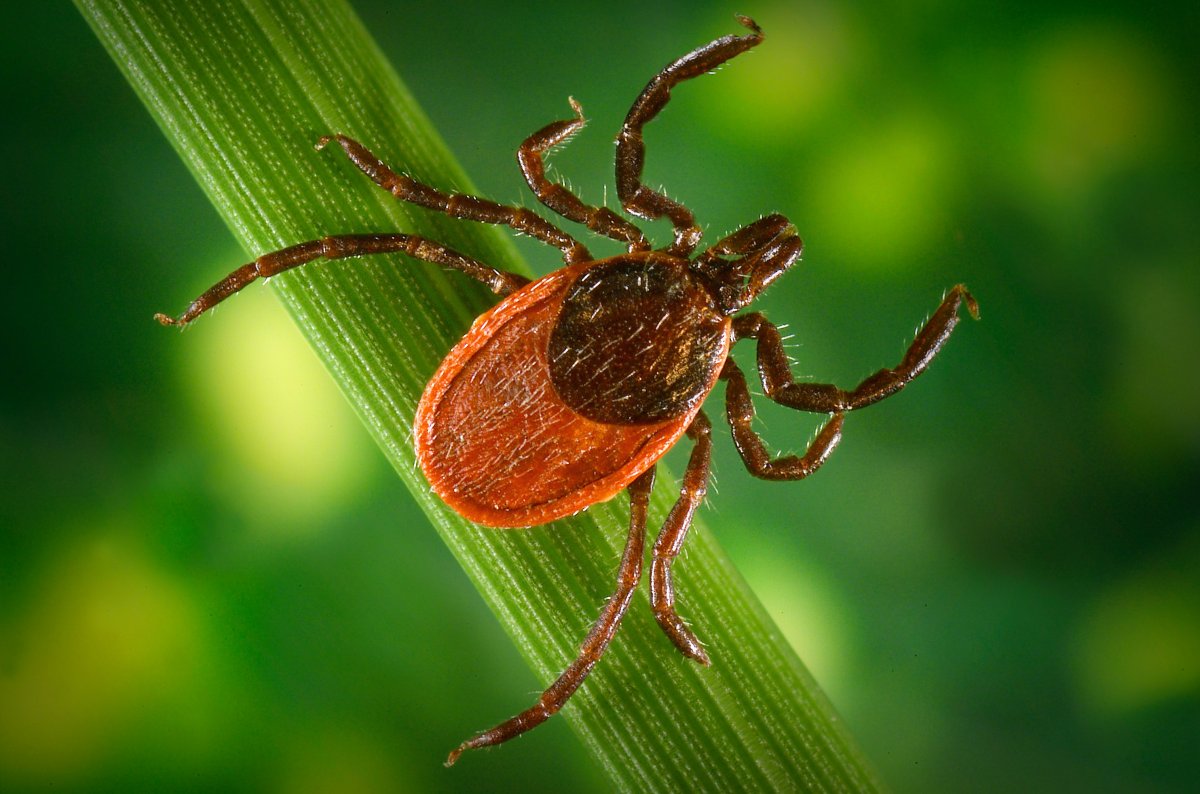They’re out there, crawling up grasses or low-growing bushes. They cling to perches, claws waving in the air, then snag an unsuspecting passerby. Latching on to shoes or clothing, they climb to a cozy spot and bite the skin, using their curved teeth and mouths to transmit bacteria and viruses as they become engorged with blood.
Ticks are masters of this host-hunting called “questing.” Nationwide, deer ticks infect 300,000 people annually with Lyme disease, and transmit the rare but sometimes fatal babesiosis.
A bite can cause flu-like symptoms or hives two days or up to nine weeks later, plus facial swelling and trouble breathing. Untreated, the transmitted pathogens can cause paralysis, limb or joint amputation, and/or organ failure.
The spread of tick-borne diseases (TBDs) has been labeled an epidemic, with New York State having the nation’s highest number of confirmed Lyme cases. Suffolk County has at least 500 reported cases and boasts the state’s highest babesiosis rate.
TICKS’ BEST-KEPT SECRETS
Researchers have learned that ticks don’t fly, leap or jump. And their bite doesn’t always produce a bull’s-eye-shaped rash.
Only female ticks are bloodsuckers, swelling to 135 times their original size; sometimes, male ticks steal the blood. After a blood meal, she lays thousands of eggs, keeping them moist by painstakingly wrapping each one in wax from an organ on her head.
Genital secretions of people who had intimate contact have revealed Lyme bacteria, and the bacterium that causes Lyme and the bacterium that causes syphilis are cousins. Babesiosis can be transmitted from mother to baby during pregnancy or delivery, or by transfusion.
These arachnids — not insects — are not a new problem, as proved by a 30-million-year-old amber-preserved tick engorged with monkey blood unearthed in the Dominican Republic. More recently, over the past 50 years, a dozen emerging TBDs have been discovered. Between 2001 and 2015, TBD rates doubled nationwide.
Hundreds of East Enders developed red meat allergies starting in 2010. The cause? Bites from lone star ticks, dubbed “reverse zombie” ticks because they make humans say “No” to red meat. Symptoms included itching, stomach cramps, flu-like symptoms, trouble breathing — and even death from anaphylactic shock. Doctors warn those with the allergy to avoid beef, pork, lamb, goat, rabbit, venison, and animal products like gelatin and milk.
THE HUMAN-TICK CONUNDRUM
Humans help increase ticks’ numbers. Some trace higher survival rates to climate change’s warmer weather. Others blame suburban development, forests decimated to become landscapes that not only invite people but provide paradises for deer mice. Ticks feed on LI’s white-footed mice; 90 percent of these mice carry Lyme, other bacteria and parasites. Development destroys fox, raptor, and other mouse predator habitats, so more mice survive to host ticks.
For de-ticking, people embrace natural solutions, keeping chickens, bats, and other predators. Just one opossum can vacuum 4,000 ticks in one week with its mouth.
THE INVISIBLE ILLNESS
After visiting an area with sea grass in Amagansett, 6-year-old Cate Higgins discovered two bulls-eye rashes and took antibiotics. Six months later, she was getting headaches, which later worsened. Neurologists and concussion specialists tried different medicines without success.
In 7th grade, she developed asthma with the headaches. She was missing one day of school a week, then several. She had a rash that spread and was extraordinarily fatigued and anxious.
Finally, an acupuncturist suggested looking at her bloodwork and diet. They did, and found a suppressed immune system.
Now age 15, the Oyster Bay resident dropped out of public school because of severe headaches. For her slow-growing, chronic Lyme disease, some remedies work, and some don’t.
Her mother Margaret Higgins says the 10 doctors they consulted treated only the migraines and didn’t look at the big picture.
“It’s a very polarizing disease. Some in the medical community don’t acknowledge chronic Lyme disease,” says Higgins. “It’s an invisible illness: She looks fine, but often can’t get out of bed, do sports, or see friends.”































